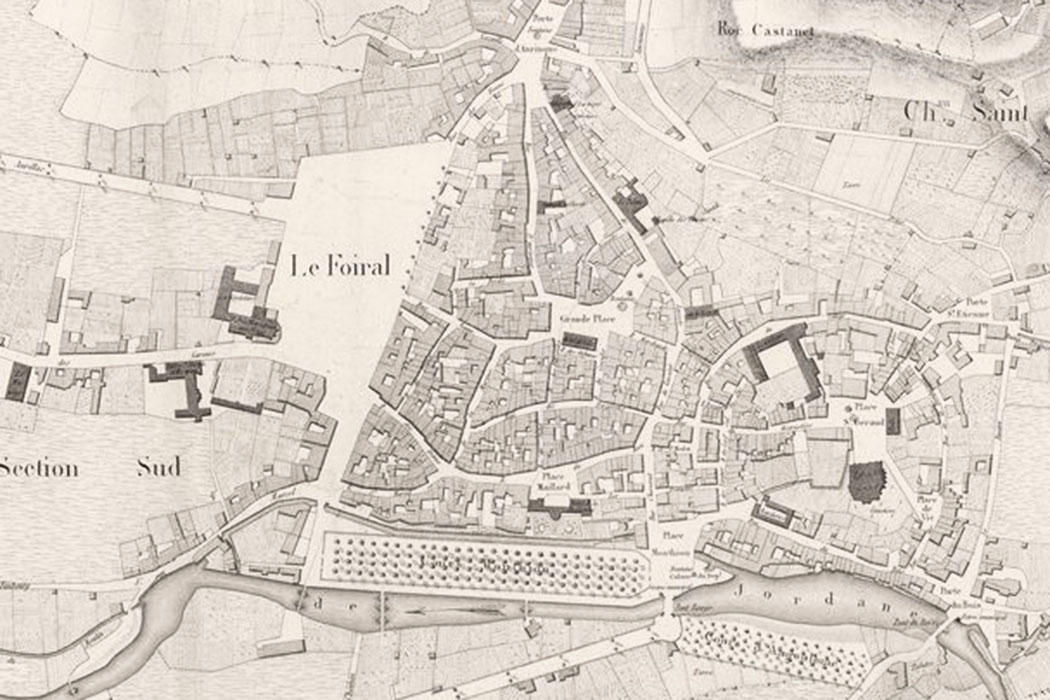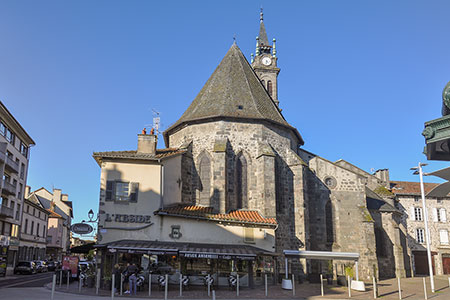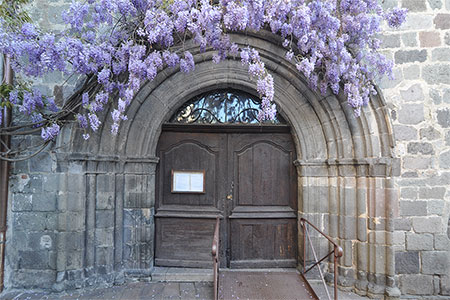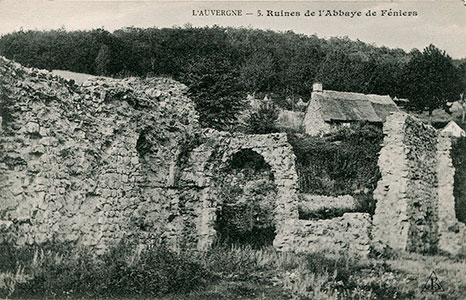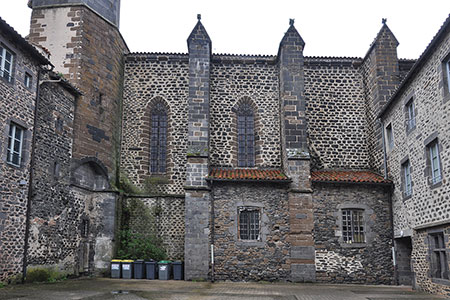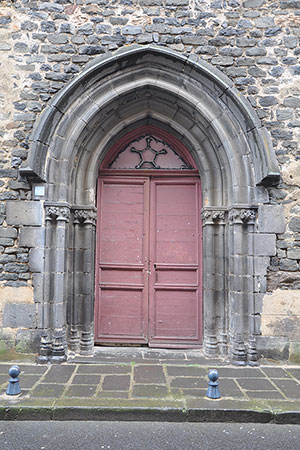Franciscans of Aurillac / Notre-Dame-aux-Neiges
(Aurillac, Cantal)
The Franciscan convent of Aurillac was founded around 1225 by Saint Anthony of Padua during his stay in this region. It was built outside the town walls, to the southwest of the historic center. By 1332 the convent was fully active and had already gained considerable importance, housing a large community.
It later suffered from the Wars of Religion, but by 1634 it had been rebuilt and once again accumulated significant property. This wealth led the ecclesiastical authorities to intervene in order to restore the Franciscan order’s spirit of poverty. In 1791 the convent was suppressed during the Revolution, when nine friars were still residing there. The following year, in 1792, the convent church was turned into a parish church, placed under the patronage of Notre-Dame-aux-Neiges. The conventual buildings were almost entirely lost, and today only the church, altered over time, and the chapter house remain.
- BOUANGE, Guilelmus M. F. (1899). Histoire de l'abbaye d'Aurillac: précédée de la vie de Saint Géraud, vol. 2. París: Fontemoing
- CAILLET, Marie (2024). L’enceinte urbaine d’Aurillac (Cantal) : état des connaissances sur ses origines et son évolution. Revue archéologique du Centre de la France, vol. 63
- JOUBERT, Chanoine (1966). La triste fin du Couvent des Cordeliers d'Aurillac. Revue de la Haute-Auvergne, núm. 40
The Cistercian abbey of Feniers, also known as Val-Honnête, was founded in 1173 by Béraud VII de Mercoeur (1151-1208), with the intervention of the abbot of Notre-Dame de Bellaigue (Puy-de-Dôme) although it has also been attributed to the abbey of Aiguebelle (Drôme). The first recorded abbot of the monastery was Jean de la Tour. Thanks to the protection of the Mercoeur family, by the 13th century it had already gathered a vast patrimony, together with seigneurial and jurisdictional rights. In 1328, King Philip VI (1293-1350) placed the monastery under his protection.
Affiliation of Feniers
According to Originum Cisterciensium (L. Janauschek, 1877)
The last regular abbot of the community was Bernard de Serre, who died in 1522. He was succeeded by Claude de Montdor, who imposed himself by force as commendatory abbot. From then on, a period of decline began: by the late 16th century the monastery was in poor condition and the community had dispersed. Restoration started in the first half of the 17th century, although the abbey still went through episodes of laxity in observance. The Revolution and its consequent suppression came in a time of deep decline; the site was sold and soon fell into ruin, further damaged by pillaging and fires in the 19th century. Today, it remains in an advanced state of ruin.
- BEAUNIER, Dom (1912). Abbayes et prieurés de l'ancienne France. Vol. 5. Bourges. Abbaye de Ligugé
- BOUVARD, Emmanuelle Marie (2016). Empreintes monastiques en moyenne montagne du XIIe siècle à l’Actuel. Tesi doctoral: Université Lumière Lyon 2
- BOUVARD, Emmanuelle Marie (2021). Feniers, le Bouchet et leurs voisines : de la fondation au site aménagé. Intégration des abbayes cisterciennes dans l’Auvergne médiévale. Morimond 1117-2017. Université de Lorraine
- CHALVET DE ROCHEMONTEIX (1882). Histoire de l'abbaye de Ferniers ou du Val-Honnête en Auvergne. Clermont-Ferrand: Thibaud
- JANAUSCHEK, Leopoldus (1877). Originum Cisterciensium. Vol. 1. Viena
- MOULIER, Pierre; i altres (2001). Église romanes de Haute-Auvergne, vol. 3 : Saint Flour. Nonette: Créer
- SAINT-MAUR, Congregació de (1720). Gallia Christiana in provincias ecclesiasticas distributa. Vol. 2. París: Typographia Regia
Jacobins of Saint-Flour / Saint-Vincent
(Saint-Flour, Cantal)
Although the Dominicans had probably arrived in Saint-Flour earlier, the construction of their church began under Bishop Pierre d’Estaing (1361-1368). The church was consecrated in 1425 and completed in the mid-15th century. The works were largely financed by Duke Jean of Berry (†1416), and the church was originally dedicated to Saint John the Baptist. Later, its dedication was changed to Saint Vincent, in memory of his visit to Saint-Flour in 1416. Following the Revolution, the convent was suppressed and, later on, the chapel became a parish church, a role it retained until 1920.
- OURGUIGNON, Claire (2019). Architecture et décor des couvents mendiants dans le Massif central. Monastères et couvents de montagne. París: Comité des travaux historiques et scientifiques
- CHALUDET, Chanoine (1917). Les evêques de Saint-Flour. Pierre d’Estaing. Revue de la Haute-Auvergne, vol. 19
- ÉNAUD, François (1976). Peintures murales du XVe siècle découvertes à l'église Saint-Vincent de Saint-FIour (Cantal). Bulletin de la Société Nationale des Antiquaires de France
- ROHAULT DE FLEURY, Georges (1903). Gallia Dominicana. Les couvents de St. Dominique au Moyen Âge. Vol. 2. París
